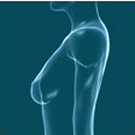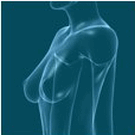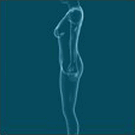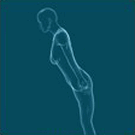Ear pinning back surgery
Correction of Prominent Ears in Ukraine

What It Will Do. An otoplasty corrects prominent ears so that they lie flat (but not squashed) against your head.
What It Won’t Do. This operation does not change the size or shape of your ear, although that can be done at the same time. Some ear shapes are difficult or impossible to correct. Fortunately, an odd ear shape is much less noticeable when the ear is flat against your scalp. Also, surgery will not make your ears perfectly symmetrical. No person has two identical ears. You will notice slight differences between your ears, if you look closely, both before and after surgery.
What is ear surgery?
Ear surgery, also known as otoplasty, can improve the shape, position or proportion of the ear.
Otoplasty can correct a defect in the ear structure that is present at birth that becomes apparent with development or it can treat misshapen ears caused by injury.
Ear surgery creates a natural shape, while bringing balance and proportion to the ears and face. Correction of even minor deformities can have profound benefits to appearance and self-esteem.
If protruding or disfigured ears bother you or your child, you may consider plastic surgery.
Specifically ear surgery can treat:
- Overly large ears — a rare condition called macrotia
- Protruding ears occurring on one or both sides in varying degrees — not associated with hearing loss
- Adult dissatisfaction with previous ear surgery
Ear surgery candidates
Children who are good candidates for ear surgery are:
- Healthy, without a life-threatening illness or untreated chronic ear infections
- Generally 5 years old, or when a child’s ear cartilage is stable enough for correction
- Cooperative and follow instructions well
- Able to communicate their feelings and do not voice objections when surgery is discussed
Teenagers and adults who are good candidates for ear surgery are:
- Healthy individuals who do not have a life-threatening illness or medical conditions that can impair healing
- Non-smokers
- Individuals with a positive outlook and specific goals in mind for ear surgery
Ear surgery is a highly individualized procedure and you should do it for yourself, not to fulfill someone else’s desires or to try to fit any sort of ideal image.
Ear surgery recovery
Discomfort immediately following ear surgery is normal and can be controlled with pain medication. There may be an itchy feeling under bandages. It is essential that bandages remain intact and are not removed, for any reason. Failure to do so may result in loss of some of the correction and may require a secondary surgery.
Be sure to ask your plastic surgeon specific questions about what you can expect during your individual recovery period.
- Where will I be taken after my surgery is complete?
- What medication will I be given or prescribed after surgery?
- Will I have dressings/bandages after surgery? When will they be removed?
- Are stitches removed? When?
- When can I resume normal activity and exercise?
- When do I return for follow-up care?
The practice of medicine and surgery is not an exact science. Although good results are expected, there is no guarantee. In some situations, it may not be possible to achieve optimal results with a single surgical procedure and another surgery may be necessary.
Ear surgery results
Ear surgery offers almost immediate results in cases of protruding ears, visible when the dressings that support the new shape of the ear during initial phases of healing are removed. With the ear permanently positioned closer to the head, surgical scars are either hidden behind the ear or well hidden within the natural creases of the ear.
The results of more extensive ear surgery and reconstruction may appear in stages over time.
Ear surgery procedure steps
Step 1 – Anesthesia
Medications are administered for your comfort during the surgical procedure. The choices include local, intravenous sedation or general anesthesia. Your doctor will recommend the best choice for you.
Step 2 – The incision
Correction of protruding ears uses surgical techniques to create or increase the antihelical fold (just inside the rim of the ear) and to reduce enlarged conchal cartilage (the largest and deepest concavity of the external ear). Incisions for otoplasty are generally made on the back surface of the ear. When incisions are necessary on the front of the ear, they are made within its folds to hide them. Internal, non-removable sutures are used to create and secure the newly shaped cartilage in place.
Your ear surgery consultation
The success and safety of your procedure depends very much on your complete candidness during your consultation. You’ll be asked a number of questions about your health, desires and lifestyle.
Be prepared to discuss:
- Why you want the procedure, your expectations and desired outcome
- Medical conditions, drug allergies and medical treatments
- Use of current medications, vitamins, herbal supplements, alcohol, tobacco and drugs
- Previous surgeries
- Your surgeon may also:
- Evaluate your general health status and any pre-existing health conditions or risk factors
- Take photographs for your medical record
- Discuss your options and recommend a course of treatment
- Discuss likely outcomes of ear surgery and any risks or potential complications
The Process of Healing
What to Do About Pain
You should have no pain, unless a stitch is pulling on your bandage, or the bandage is too tight. This can be relieved by cutting your bandage (as directed by your surgeon—don’t do it otherwise) or having your surgeon or his nurse apply a new bandage. Your ears will throb the day of surgery while the local anesthetic wears off, and they may throb or ache a little, especially in the evenings, for a day or so. You’re very unlikely to need more than one or two pills of a narcotic painkiller (many people take none) but you will need some acetaminophen, a nonaspirin pain reliever that is sold in all drugstores without prescription.
The Healing Process
Your recovery will be from the anesthesia: 2 to 5 days of grogginess, if you were sedated, and 10 days to 2 weeks of great fatigue, if you had general anesthesia. You may also be nauseated or sick for a day after general anesthesia. Children recover very quickly from general anesthesia, and for a child of 6, the recovery period will be only a few days of fatigue—less than a weary parent hopes for an active child. Anesthesia makes children cranky, too.
Your head is wrapped for 2 to 5 days in a bulky bandage covering your scalp and ears and sometimes going around your chin-
Once the bandage is removed, you will wear a headband or a light bandage such as an Ace bandage wrapped around your head and over your ears for a week or so. What happens after that depends on your surgeon. 1 ask my patients, especially the children, to wear a headband as much as possible for up to 6 weeks—this avoids bending the ear the wrong way by sleeping on it and having some “friend” think it is “funny” to tweak your newly operated ears.
Taking Care of Your Wound
You will need no special care. Your stitches lie behind your ears. Once the bandage is off, you can bathe normally. Pat behind your ear gently to dry.
Stitches
Your stitches are behind your ear. These are removed in 5 to 7 days, unless they are “subcuticular pull-out stitches.” These run below the surface of the skin and can stay in for 2 weeks without inflaming your skin.
Scars
You will have a long (2 to 3 inch) scar in the crease behind your ear. Since your ear now lies close to your scalp, the scar doesn’t show.
- You will need several headbands to support your “new” ears while they heal. Also, the headbands keep them warm—your ears will be super-sensitive to the cold for about a year after your surgery.
- Earrings can be worn once your bandages are off, but be sure they are light and small so that they don’t drag or pull on your tender new ears.
Sack to Work
You can go back to work on day 5 after surgery—when your bandage is taken off. Even if your bandage is removed sooner, it is unlikely that you will have recovered adequately from your sedation to go to work earlier. If you had general anesthesia you should give yourself 7 to 10 days.
Back to Sports
Your ears will throb when you exercise during the first two weeks, so postpone any vigorous exercise. You can take long walks and do stretching exercises at 7 days. You can swim by the tenth day, but it is best not to swim for 2 or 3 weeks if you have had swimmer’s ear (otitis from swimming pool bacteria). If you did get an infection, it could spread to your wound and ruin your result.
You can jog hike, and do Nautilus after 2 weeks. Please, no contact sports for 6 weeks and no noncontact ball sports (basketball, tennis) for 3 weeks. A blow to your ear could cause bleeding around the cartilage and leave you with a misshapen “boxer’s ear.”
How much ear-pin surgery cost?
| Surgical correction of sticking out ear | £248 |
| Segmental resection of the pinna (one) | £724 |
| Ear surgery (one) | £405 |
| Extended ear surgery (one) | £511 |
How It Works


Request Your Free Quote Now
We respect the privacy of our clients. That is why we never publish pre and postoperative photographs on our website. These photographs shall be used explicitly to illustrate particular discussion topics related to your treatment.
100% privacy guaranteed. We keep you confidentiality and will not share your information.
















